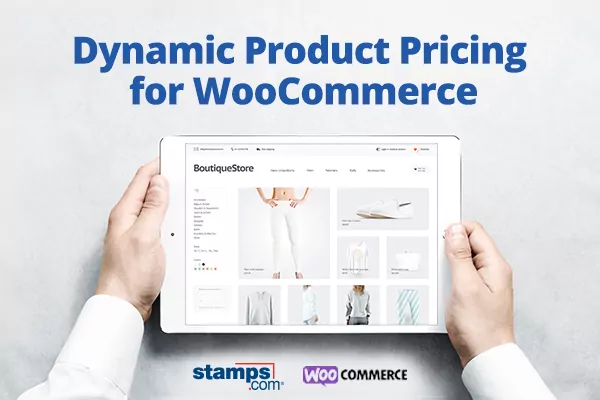
Introduction to Dynamic Pricing
If you want your business to scale, you need to stay with the times. Nowadays, consumers are highly aware of the market and do their research on a brand before making a purchase. Thus, it’s important to be aware of the current online retailer trends to stay on top. One such common trend in today’s e-commerce competitive marketplace is dynamic pricing. Strategically adjusting the price of your product to match the current demands is a sure way to gain customers’ attention and make them choose you for their business.
So how does it work? Dynamic pricing curates prices for products by gathering large amounts of data regarding customer demand, competitors, and market conditions. So the prices are always changing depending on the market and time. This is especially beneficial for businesses related to traveling, e-commerce, transportation, etc.
But is it beneficial for consumers? Are there any disadvantages associated with it? And how to implement it? We are going to answer this and much more ahead, so keep on reading.
Dynamic Pricing Strategies
Dynamic pricing is available in multiple forms which you can implement depending on your business and product type:
1. Time-Based Pricing
In the time-based pricing strategy, businesses can increase or lower the price of products based on their inventory available in their store or warehouse, date of release, and competitor price. Businesses can also use specific hours of a day to increase their sales, such as “happy hours” in a bar or offer same-day delivery with slightly higher prices.
2. Market-Based Pricing
Fluctuation in the market is a common thing and recent times have made us more aware of this than ever. Businesses would need to lower their prices if the demand decreases and increase the prices when demand is high.
3. Segmented Pricing
Segmented pricing refers to setting different prices for the same product. This is done by segmenting the buyer into categories, such as prices that could be higher or lower based on location, delivery time, membership, high-value customers, and much more. You can also set prices for the services provided, such as faster delivery and quality. Through segmented pricing, everyone can afford your product on their terms.
4. Penetration Pricing
Penetration pricing is perfect for new businesses who want to get noticed immediately. This strategy involves initially pricing the products and services at prices lower than those provided by the competitors. This results in increased visibility which helps startups gain the traffic they desire.
5. Peak Pricing
Peak pricing is implemented when the demand is high and the competition is low. It is mostly employed during peak hours or seasonal sales where the products are priced dynamically to result in more sales. For example, during the holiday season, travelers buying airplane tickets normally see much higher prices than in non-seasonal time.
There are many dynamic pricing plugins available that can set up different pricing strategies and analyze results to see which works best for your business.
Advantages and Disadvantages of Dynamic Pricing
Dynamic pricing can easily go sideways if not implemented property and thus along with advantages, it has few disadvantages as well. Let’s see if the pros outweigh the cons in this matter.
Advantages
1. Increased Profit
By implementing dynamic pricing on your online store, you can benefit from increased sales and revenue. How? Because the machine collecting data to create a specific algorithm for your business makes sure your pricing is right. For example, if your competitor is selling the product for $3 and you sell them for $1. The dynamic pricing strategy will price your product at $2, which will be profitable for your business and also improve customer satisfaction as they believe they are getting a better deal from you.
2. Knowing Your Competitors
Perfectly implementing a dynamic pricing strategy requires you to know your competitors. It is important to know what your successors have been doing. What are their prices? How do they price their products? When and how do they lower or increase prices? And much more. Once you have a clear view of your competitors, you can improve and implement these strategies seamlessly in your store.
3. Customer Insight
The better you know your customers, the easier it will be to sell to them. Dynamic pricing provides you insight into your customer behavior, their shopping hours, their willingness to pay a price, their interests, and their demands. This helps you provide an optimum shopping experience to your customers and result in increased sales.
Disadvantages
1. Increase in Competition
Dynamic pricing can easily get out of hand and start a price war. Now, what’s a price war? If a single business lowers its price to gain customers, similarly another business does the same and soon all other competitors follow which leads to incredibly reduced prices which are gaining no profit for the businesses.
2. Distrust in Customers
These price wars lead to distrust in customers as well. How? If your loyal customers find out that someone else got the same product at half the price from another vendor, they will feel cheated. And no matter how loyal a customer is, a further reduced price is sure to get them converted to another business.
To avoid these errors, make sure to have a perfect dynamic strategy in place and stay true to it because overdoing dynamic pricing could result in loss.
How to Implement Dynamic Pricing on your WooCommerce Store
There are many ways you can implement and integrate dynamic pricing into your online store. Setting up dynamic pricing cannot be done overnight. It is a long and laborious process of easing into the market, getting the customers, and increasing profit keeping the demand in view. Below we have mentioned a few strategies that you can implement on your site to properly enable dynamic pricing.
1. Initial Pricing
As mentioned above, this pricing strategy is employed by new business owners, who introduce products at prices that are considerably lesser than the competitor. How? Because they take little profit at the beginning to gain customers and then once a strong client list has been established, the prices are gradually increased.
2. Introduce Bundle Pricing
Another effective way to introduce dynamic pricing is by creating bundles. This is great for businesses that deal with clothes, food, sports equipment, etc. For example, an online store that deals with computers and their accessories, can bundle up a complete computer system and sell it for a slightly discounted price. This would help in increasing sales as your customers think they are getting a good offer and also increase the average order value.
3. Offer Discounts and Coupons
We all know customers love a good deal. Coupons and discounts are great for attracting the audience’s attention, but too much use of this dynamic pricing strategy could result in less profit, the difficulty of increasing the prices later on, and also makes your product seem cheap. Thus, it is recommended to occasionally and strategically place discounts depending on the need.
Final Thoughts on Dynamic Pricing
Dynamic pricing can be an ideal solution for the competitive e-commerce market, but it can also create customer mistrust in your brand if misused. Thus, it is important to devise a proper strategy and work accordingly. Overdoing anything will have its consequences, such as running year-long discounts will give your customers the impression that your products are cheap or they won’t purchase when you increase the price. It is a continuous ongoing process and you need to improve and implement it on the way based on the supply and demand.
Stamps.com Connects Directly to WooCommerce!
Stamps.com’s direct integration with WooCommerce allows online retailers to easily import, manage, and ship your e-commerce orders. Benefits include:
- Import order data directly into Stamps.com from WooCommerce
- Print USPS and UPS shipping labels in one step
- Automatically post back order and tracking info to your store
Make your WooCommerce shipping easier today by connecting your store to Stamps.com!
Author’s Bio
Xaviera Khalid is the content writer at WooKeeper.com. She is an avid reader and uses her creativity to write interesting articles about WooCommerce and its related topics. She focuses on SEO-optimized content and provides factual writing.


